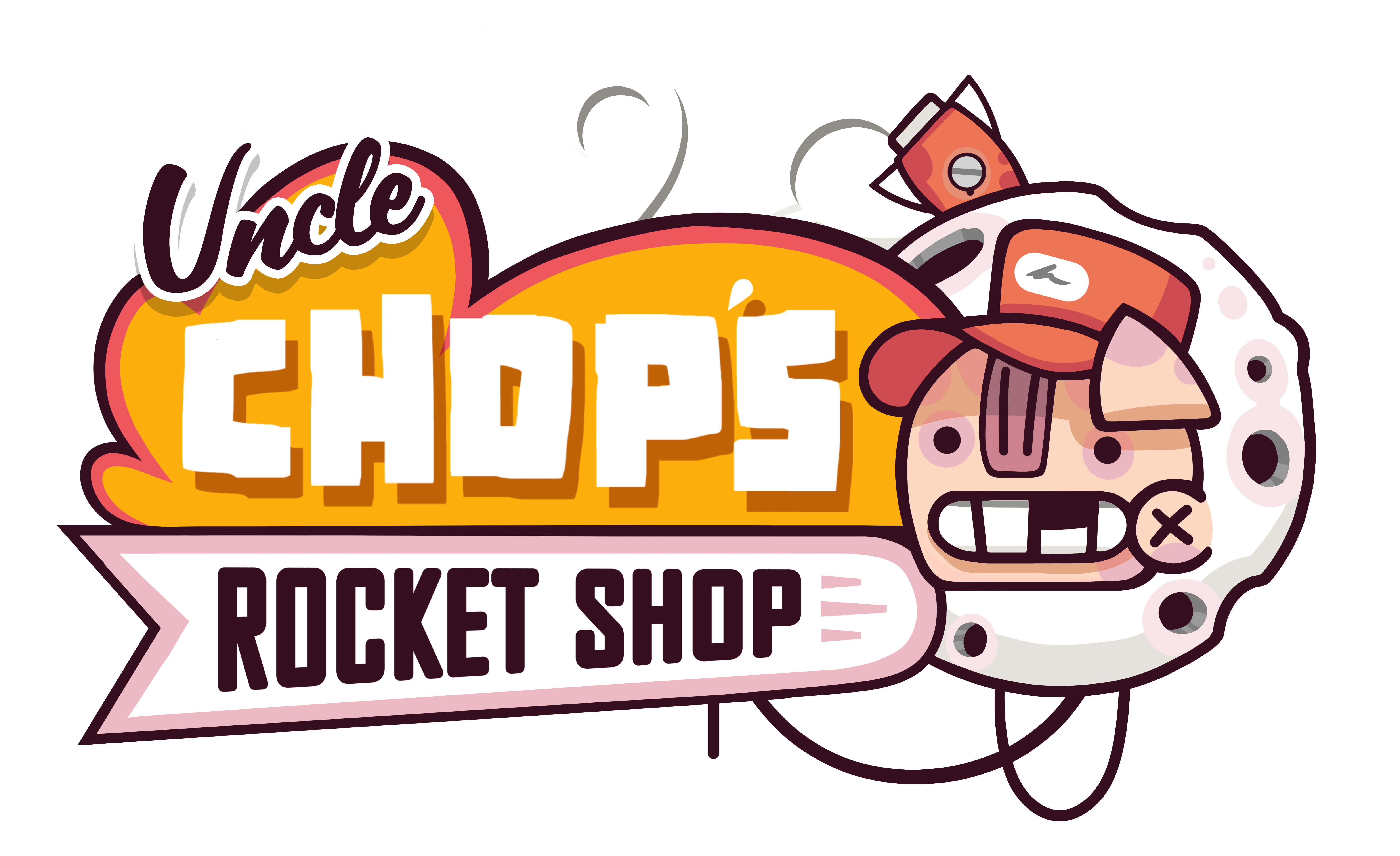Uncle Chop’s Rocket Shop (or Chop Shop for short) is a late-2024 release by Beard Envy Games, published by Kasedo Games. In it, you play as the fox-headed Wilbur, a guy working as a mechanic for the titular Uncle Chop’s service station. This Uncle Chop is a piece-of-shit boss who requires exceedingly more insane amounts of money as rent to work/live there, and upon failure, kills you. However, you’ve been placed in a time loop, repeating the same days again and again, until you are able to achieve some unknown goal. Throughout this journey, there are three distinct perspectives within the game. These represent the suppressive structures of capitalism, and momentary freedom from it. This is done through both player control and puzzle solving.
In order to get money, you need to fix various ships that come through. This is done via two distinct perspectives. The first is a 2D side-scroller view where you move between the ship, your workstations, and the shop. You are trapped along this single axis, and each part of it relates back to how Wilbur is able to do their work. When you wake, you can leave your house into this main axis. To the left of here seems to be nothing, however, this is where you eventually make rent payments. To the right is the rest of the world: a cafe, a landing pad, and a workshop. First there is the cafe, a stopping place for clients and where you clock-in. Beyond this is the landing pad where ships are worked on, followed by the workshop, where all your workstations are. All of this limits the player to only ever be able to move along a restricted axis and interact with objects that are work related, nothing else.
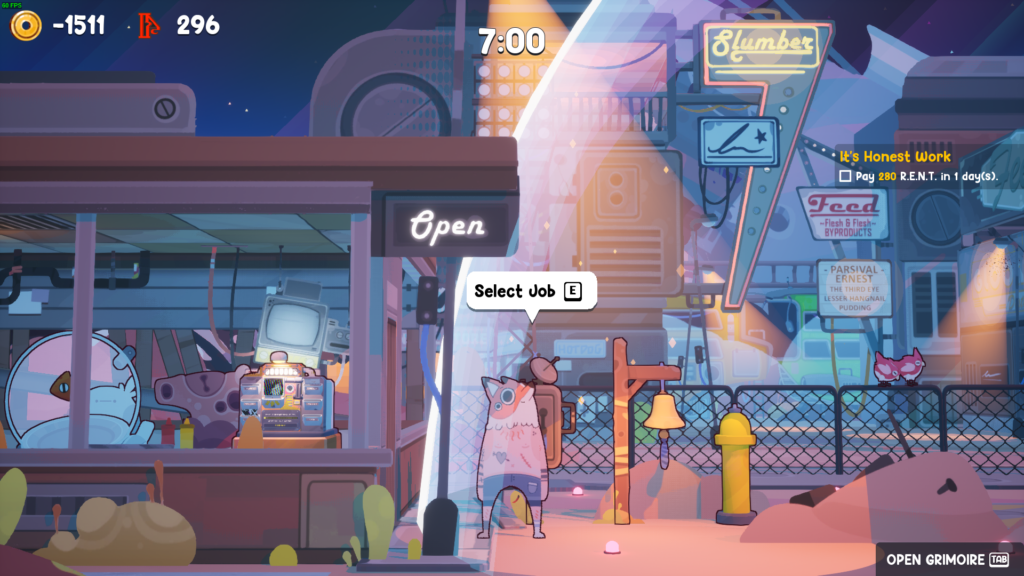
Between the cafe and landing pad in the 2D side-scroller view.
This leads to the second perspective, a static first-person camera that appears when interacting with objects. The right side of the screen has the players inventory where they put different parts to fix the ships that come through, and the left has a view of the object being interacted with. Being static, the player is only ever able to have a single view of every object and can only interact with objects deemed necessary by the game, in this case only workstations and ship modules. This makes it so the world is centred around interaction for Uncle Chop’s work.
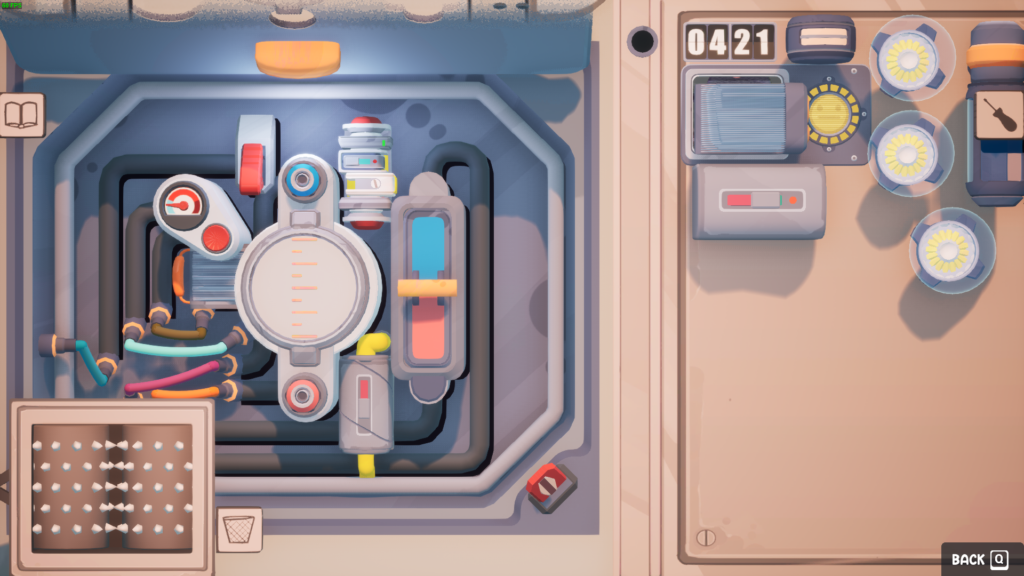
The static first-person camera when fixing a module.
Player control in Chop Shop is limited through the different perspectives, but solving puzzles also shows the restrictions on the player, halting any freedom they may have. In order to fix ship modules, the player must first use the manual they are given to find the module they are working on. From here, they follow a strict set of instructions and logic to troubleshoot, and then fix, each module. Within this strict logic comes the limitations. The player is forced into carrying out specific tasks in specific ways. Deviation from this ultimately leads to issues with the end result. By itself, this isn’t bad. How else will you fix such complicated machines? However, it prevents the player from thinking outside of what’s in front of them, ensuring that they don’t think about what exactly they are doing and just do as they’re told, making money and continuing on Uncle Chop’s agenda.
By now, you may have realised that I said there were three different perspectives in Chop Shop. That’s where the VR module comes in. After some brief setup requiring the same strict instructions as always, the player activates the VR and enters a first-person view with full control over their movement. Compared to the other perspectives that lock the player into one small part of the world, they can go anywhere inside the VR realm they wish. In order to fix the realm and continue on, the player is given a task depending on which three of the realms they enter: the lighthouse, the warehouse, or the cell. However, contrary to other puzzles that require following strict instructions, these realms only provide you with the end goal and require you to solve them without any help. This gives the player freedom in their work for Uncle Chop, as now they have a say in how the work gets done in a more fulfilling way.
To show this, let’s look at all three realms. First, the lighthouse. You spawn in a small courtyard in front of the lighthouse. There is paint on the side of the building, saying ‘Light up’, with an arrow pointing to the top. This courtyard is full of decorative elements that the player can rest in, or just explore if they wish. No work is present. Then, moving into the lighthouse, there are shelves with lightbulbs on them, and a staircase going up. The staircase is long, but at the top, there is a platform for the lightbulb to go, and a switch to turn it on, fixing the realm. You can also go out onto the balcony. There’s nothing here, just a view of the surrounding area – a place to go without work.

View of the lighthouse when spawning in.
Next, we’ll look at the warehouse. This is a massive space with shelves filled with boxes. In the centre, where you spawn in, is a screen asking for a specific memory represented by a box with a number on it as well, as a dais to place it on. There is no map of this area, so the only way to find the box is to search though all the shelves. This gives the player the freedom to start looking anywhere they want and progress as they please. Once found and placed on the dais, the lights turn on, illuminating the area and fixing the realm.
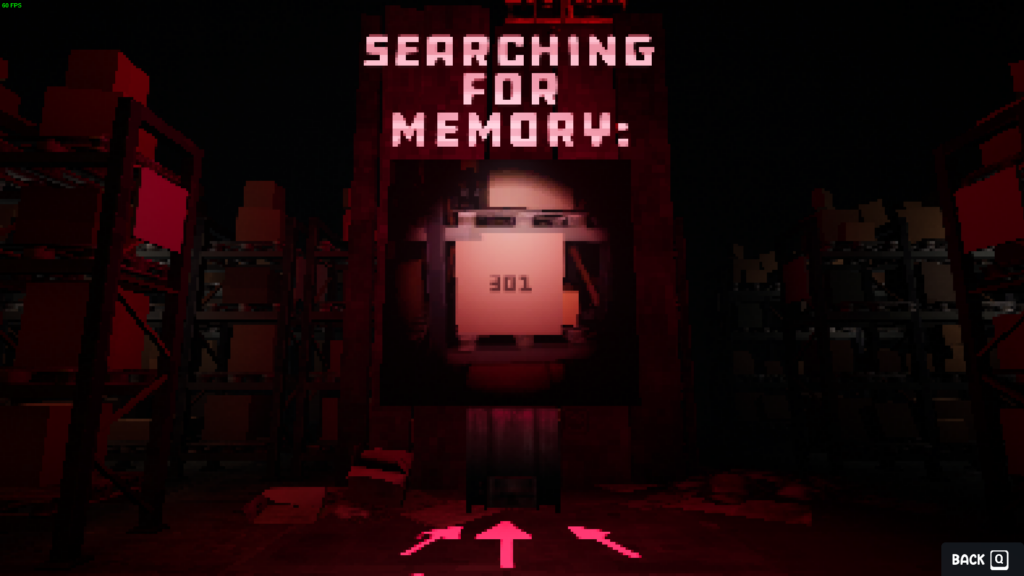
View of the screen and dais in the warehouse.
Finally, let’s look at the cell. This is a very small room with a door to another small room. It may seem like the freedom of movement is irrelevant here as the space is so small, and that may be so. However, that’s where the puzzle comes in. Above the door, there is a sign that says, ‘I open when up is down’, and the rest of the walls are covered in arrows pointing at it. Beyond the door is a switch which will fix the realm. To open the door, you must leave the realm and open the VR module’s panel. Under it are wires that control the movement in the realm, and you need to connect up to down, and vice versa. This inverts the forwards and backwards movement in the realm. The part that makes this interesting is that the manual says nothing about how to do this, and there is no mention of the controls being wired at all. This puzzle requires free thinking from the player to solve this issue, a big change from the other modules’ strictness.
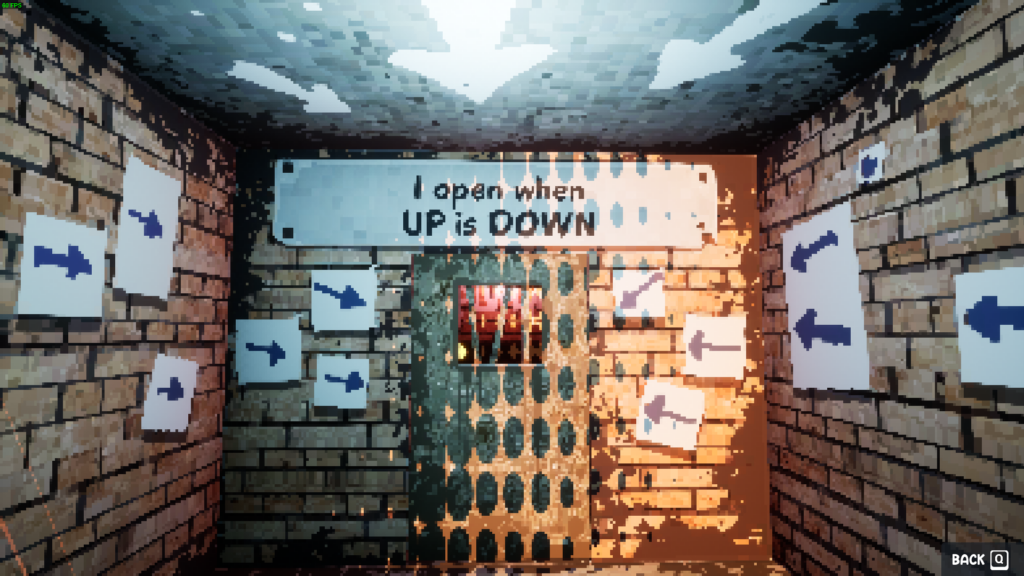
View of the first room in the cell.
Within all three of these realms, there is a sense of freedom that isn’t present outside of them, in a world controlled by money and work. I mentioned how to fix the realms, but what I didn’t say is that once fixed, you don’t have to leave. You can keep wandering within them or just chill. To leave, you press ‘Q’, giving you freedom after the work is done to choose when to finish with the realm.
This freedom is a nice breath of fresh air after the strictness of previous modules. However, this is still work, and it permeates through all of it very fast. Once you have gone through the different realms once or twice, the freedom present erodes away. With the in game time-limit pushing the player forwards, they can’t spare any time deemed necessary. Although the lighthouse provides space for relaxing and looking at the scenery, it’s more efficient to grab the closest lightbulb and run to the top. Once you’ve been through the warehouse enough times, you know exactly where each memory is. There’s no need to take your time to look for it, you just beeline straight there. And although the cell has a unique way to solve it, once you know how to do it, it feels more like a nuisance. As soon as the task is done, there’s no need to look around. You just leave immediately.
The way the freedom that is always present in these realms is restricted by the need to work and survive is quite horrific. A virtual world created specifically for this freedom is then restricted so heavily by capitalistic forces that it becomes just another module. This once unique perspective with full range of movement is limited to only the critical path. It is impossible to enjoy these realms anymore.
In the end, Uncle Chop’s influence over your survival seeps directly to the core of each part of the game. In the real world, you are limited to a strict set of perspectives that either lock you along a single axis or a single screen. Then, the one freedom you get of a full first-person experience with a need to actually think for yourself is restricted in the same way. Never leave the critical path. There’s no need to think, as it’s the same as every other time. All of this is an incredible representation of how capitalism forces workers to be subservient to the dollar bill and do as they are told without thinking, done purely through the mechanics of the game. Uncle Chop’s Rocket Shop is truly both a fun game, and a clever, mechanical twist on capitalism.
